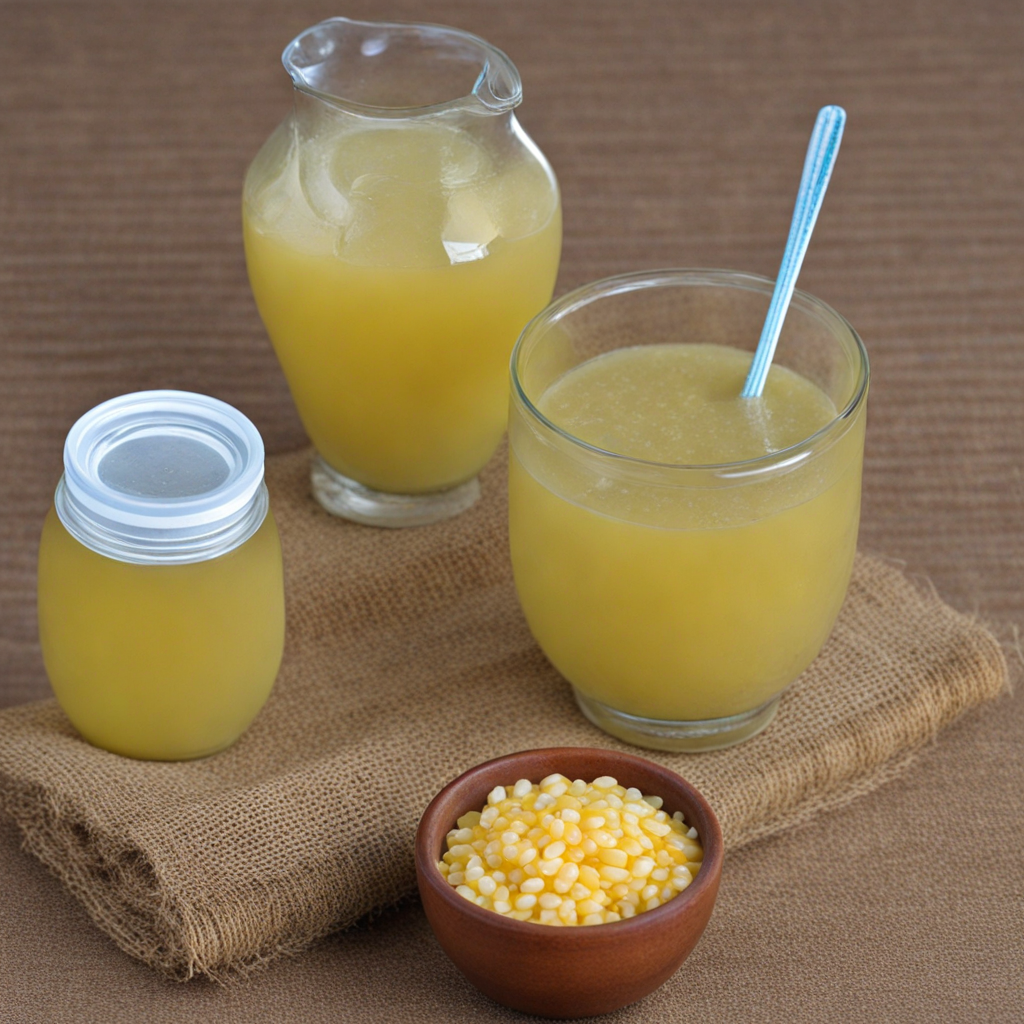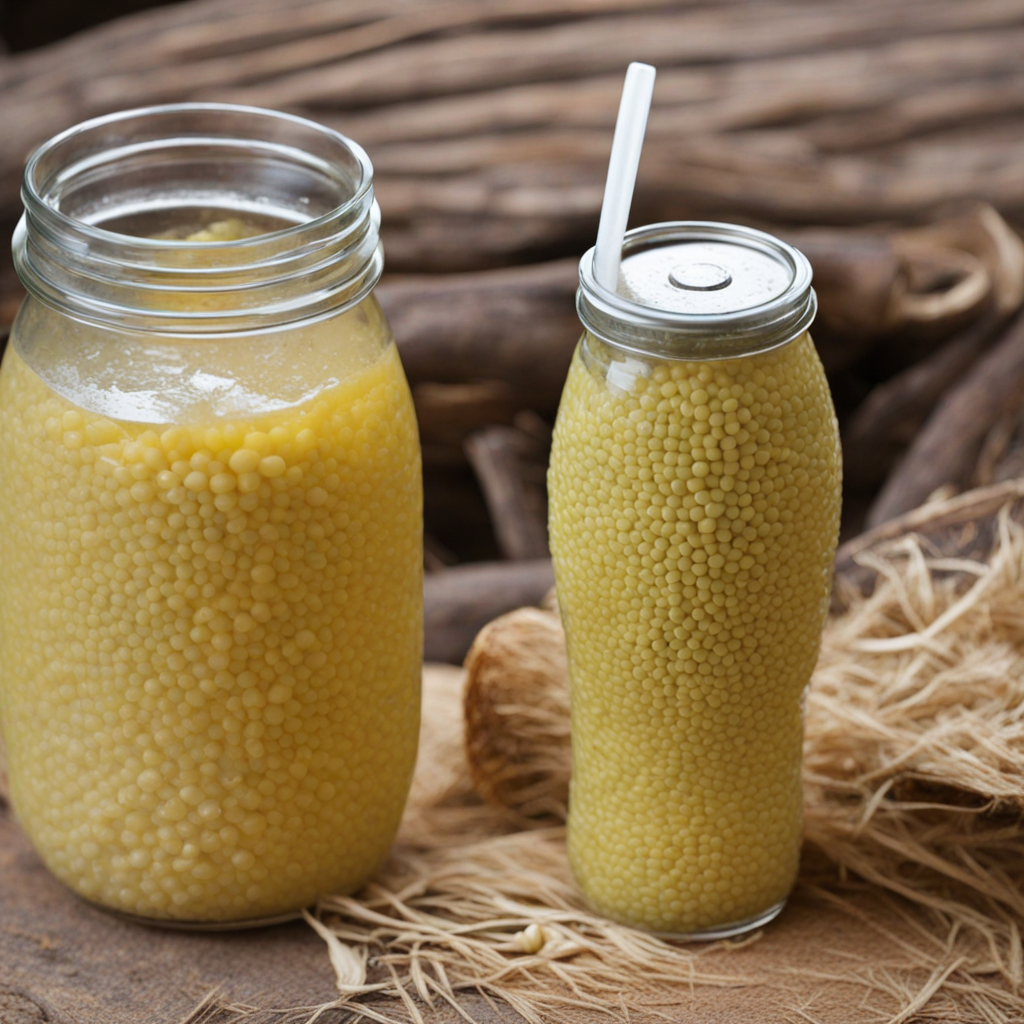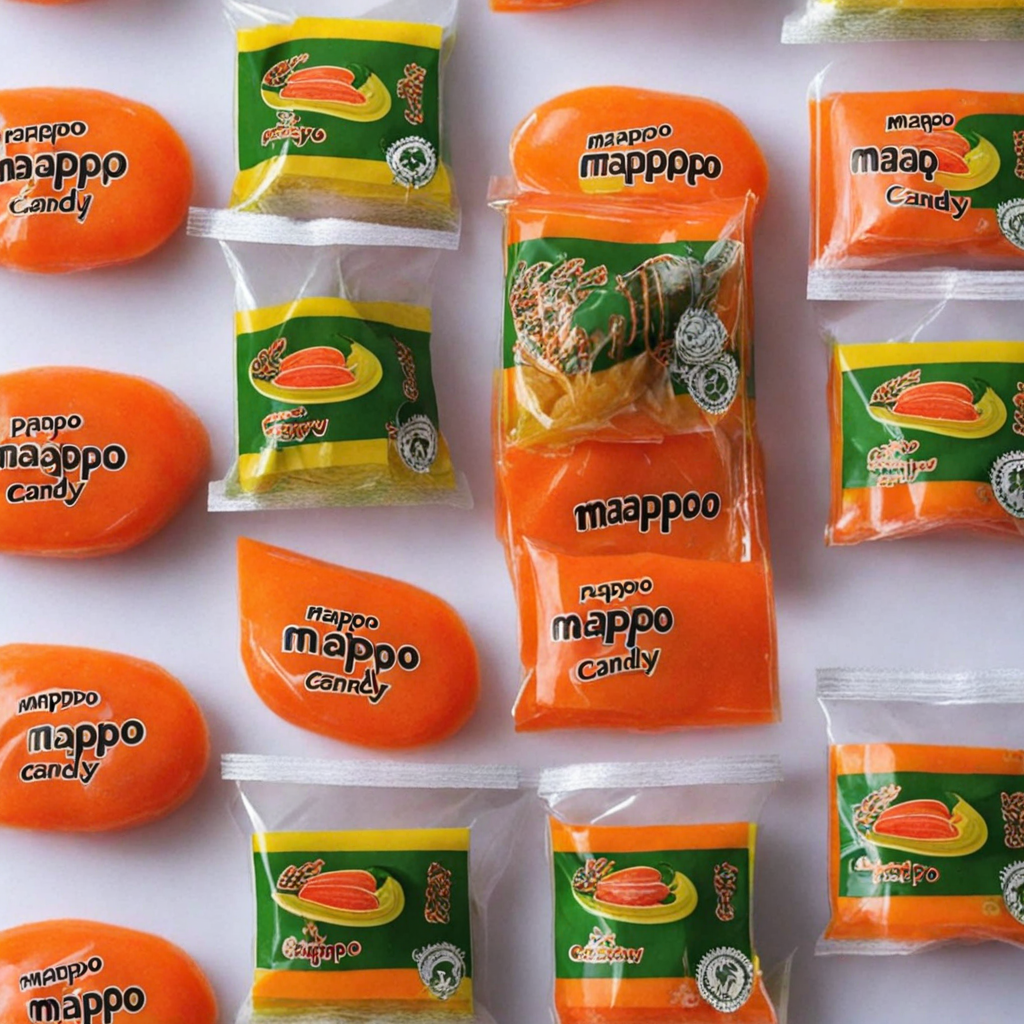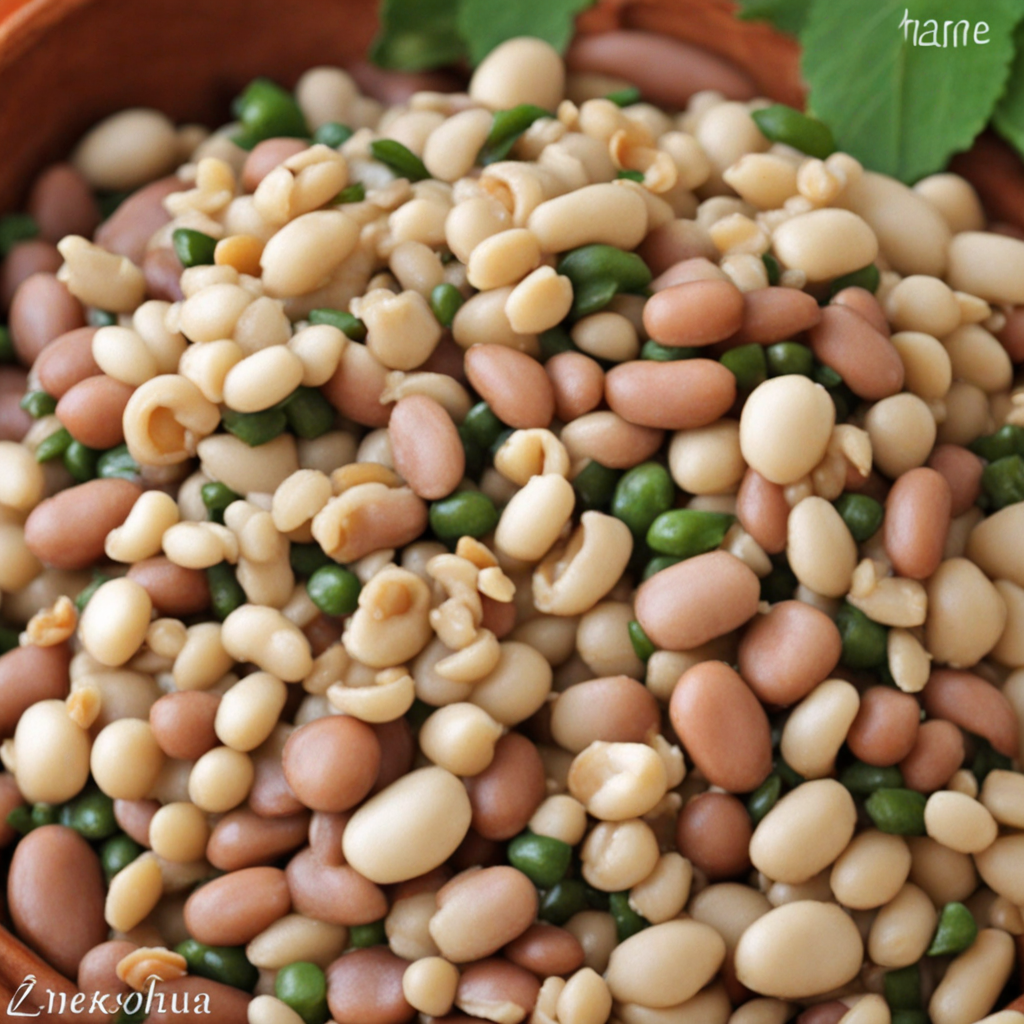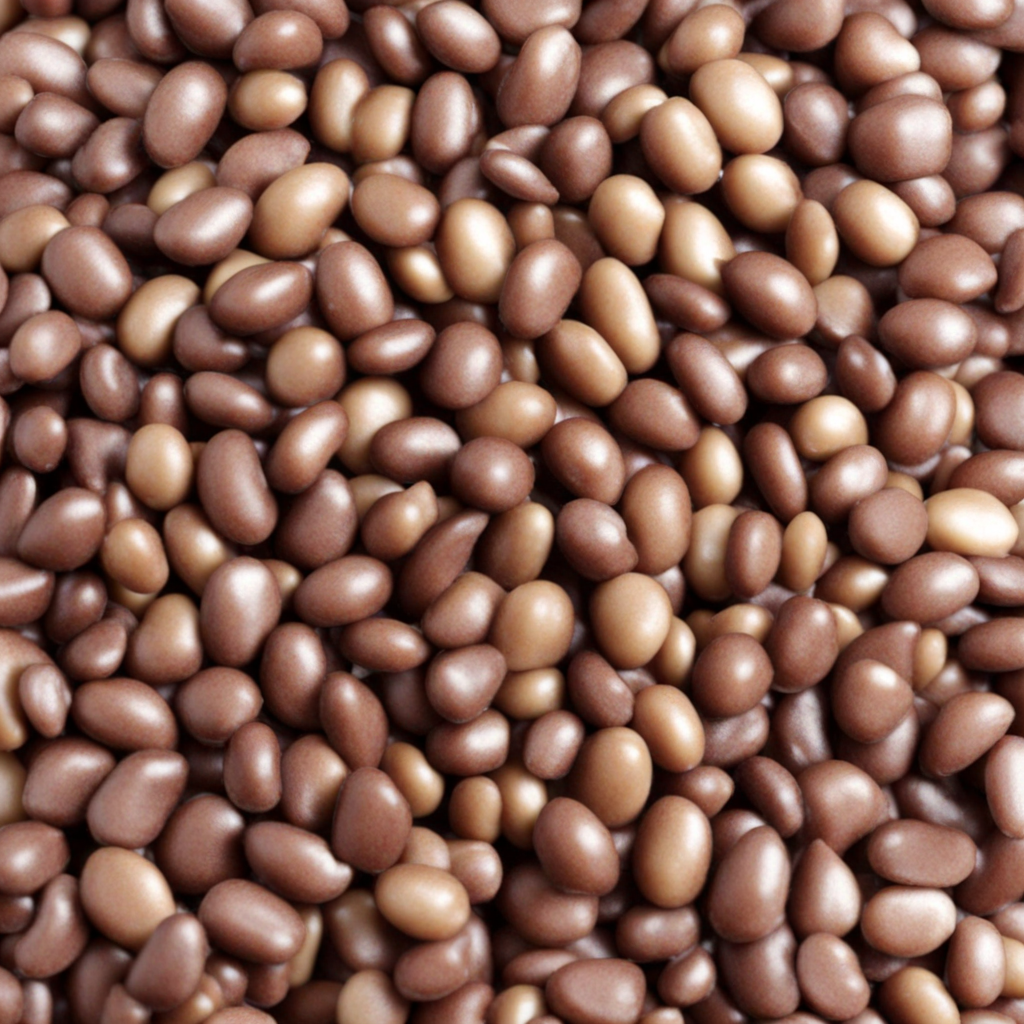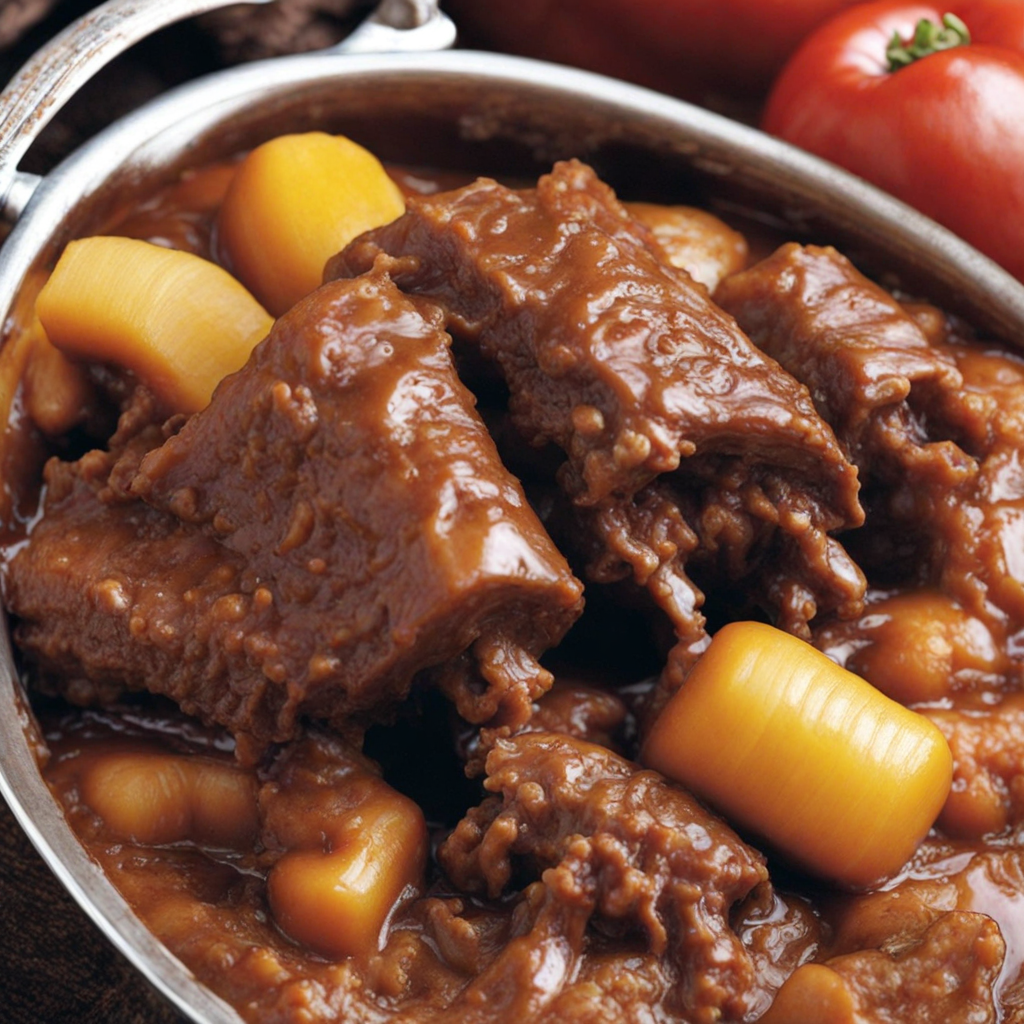Maheu
Maheu is a traditional Zimbabwean beverage that offers a unique and refreshing taste experience. This fermented drink is made primarily from maize meal, which is a staple in many African diets. The preparation involves mixing maize meal with water and allowing it to ferment naturally, resulting in a slightly thick, creamy consistency. The flavor profile is mildly sweet with a tangy undertone, thanks to the fermentation process, making it a delightful thirst-quencher, especially on hot days. In addition to maize, Maheu can be enhanced with various flavorings, including fruits such as bananas, mangoes, or even baobab, which add a fruity twist to the drink. Some variations incorporate sweeteners like sugar or honey, while others might include spices for an extra kick. The versatility of Maheu allows for a wide range of preferences, catering to both those who enjoy a simple, wholesome drink and those looking for something more adventurous. Often enjoyed as a nutritious snack or accompaniment to meals, Maheu is not only delicious but also packed with nutrients. It is rich in carbohydrates and provides a good source of energy, making it an excellent choice for those needing a boost throughout the day. As you sip this traditional Zimbabwean beverage, you will be experiencing a taste that embodies the cultural heritage and culinary creativity of the region, inviting you to appreciate the simplicity and richness of its ingredients.
How It Became This Dish
Maheu: A Journey Through Zimbabwe's Culinary Heritage Origins Maheu, a traditional fermented beverage originating from Zimbabwe, is emblematic of the country's rich agricultural heritage and the resourcefulness of its people. Made primarily from maize (corn), water, and sometimes flavored with various ingredients such as sugar, spices, or fruits, Maheu's roots can be traced back to the indigenous communities of southern Africa, who have cultivated maize for centuries. This grain, introduced to the region from the Americas in the 16th century, quickly became a staple food source, transforming local diets and agricultural practices. The process of making Maheu is relatively simple yet deeply rooted in tradition. It begins with the fermentation of maize meal, which is mixed with water to create a thick porridge-like consistency. This mixture is then left to ferment, allowing natural yeasts and bacteria to develop, resulting in a refreshing, slightly tangy beverage. Historically, this fermentation process was not only a means of preservation but also played a crucial role in the nutritional enhancement of the maize, making it more digestible and enriching it with probiotics. Cultural Significance Maheu is more than just a drink; it is a cultural artifact that embodies the social fabric of Zimbabwean life. Traditionally consumed by families, it is often associated with communal gatherings, celebrations, and rituals. In rural areas, Maheu serves as a vital source of sustenance, particularly during times of food scarcity. Its nutritional profile—rich in carbohydrates and sometimes fortified with vitamins and minerals—makes it an essential part of the diet, especially for children and the elderly. In Zimbabwean culture, the preparation of Maheu is often a communal activity. Women, who have historically been the custodians of food preparation, gather to share stories, laughter, and labor as they produce this beloved beverage. The act of making Maheu can be seen as a ritual, reinforcing social bonds and passing down culinary knowledge from one generation to the next. It is also common for Maheu to be offered to guests as a gesture of hospitality, symbolizing warmth and welcome. Development Over Time As Zimbabwean society has evolved, so too has the production and consumption of Maheu. The advent of colonialism in the late 19th and early 20th centuries altered agricultural practices and introduced new economic dynamics. During this period, the traditional farming methods of indigenous peoples were challenged, and many were forced into labor on colonial plantations, which affected their access to traditional foods and beverages. Despite these challenges, Maheu remained an integral part of the diet for many Zimbabweans. In the post-colonial era of the 1980s and 1990s, as the country sought to reclaim its cultural identity, there was a resurgence in the appreciation for traditional foods, including Maheu. This period saw a revival of interest in local culinary practices and the importance of indigenous ingredients. In recent years, the commercialization of Maheu has further transformed its place in society. With rising demand for convenient and nutritious drinks, several entrepreneurs and companies have begun producing bottled and flavored versions of Maheu, making it accessible to urban populations. These modern iterations, while retaining the essence of traditional Maheu, often include added nutrients, such as vitamins and minerals, catering to health-conscious consumers. The commercialization of Maheu has sparked debates about authenticity and cultural preservation. Traditionalists argue that the mass-produced versions dilute the connection to the historical and cultural significance of the beverage. Conversely, these modern adaptations have introduced Maheu to a wider audience, allowing it to evolve while still honoring its roots. Health Benefits and Nutritional Value The nutritional benefits of Maheu contribute to its enduring popularity. Rich in carbohydrates, Maheu provides a quick source of energy. The fermentation process enhances its digestibility and nutritional profile, often leading to an increase in B vitamins and probiotics. In many households, it serves as a nourishing complement to meals or a refreshing drink on its own, particularly in the hot climate of Zimbabwe. Moreover, Maheu has been recognized for its potential health benefits, including aiding digestion and boosting the immune system due to its probiotic content. As the global focus on gut health has grown, there has been increased interest in traditional fermented foods like Maheu, further embedding it into contemporary discussions about health and nutrition. Contemporary Significance Today, Maheu stands at the intersection of tradition and modernity. It is celebrated in local festivals and events, where it is often served alongside traditional dishes, creating a rich tapestry of Zimbabwean culinary heritage. The beverage has also found its way into the diaspora, where Zimbabweans abroad seek to connect with their roots through food. Maheu serves as a bridge between past and present, a reminder of the resilience and adaptability of Zimbabwean culture. As Zimbabwe faces challenges such as economic instability and climate change, the importance of traditional foods like Maheu becomes even more pronounced. The revival of interest in local food systems and sustainable agricultural practices has led to a renewed appreciation for indigenous foods. Maheu, in its traditional and modern forms, symbolizes a commitment to cultural heritage, food security, and community resilience. Conclusion In summary, Maheu is not merely a beverage but a significant cultural symbol within Zimbabwean society. Its origins reflect the agricultural history of the region, while its preparation and consumption embody the communal spirit of the people. As Maheu continues to evolve, it remains a testament to the enduring legacy of Zimbabwe’s culinary traditions and the importance of food in fostering community and identity. Whether enjoyed in its traditional form or as a modern adaptation, Maheu will undoubtedly continue to hold a cherished place in the hearts and homes of Zimbabweans for generations to come.
You may like
Discover local flavors from Zimbabwe


